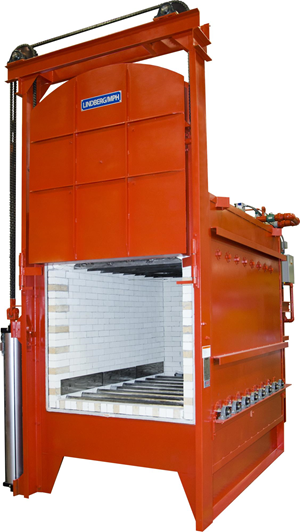
Annealing: Not a one size fits all heat treatment
Posted on November 30, 2018 in Blog

Annealing is a method of heat treatment that changes a material’s strength and hardness. Annealing steel is commonly done by manufacturers to relieve internal stresses that may cause product failure. Annealing is also used to create a uniform, homogeneous internal structure which in turn strengthens the material. After the process is complete, materials such as annealed glass or aluminum are more workable and less brittle. Annealing is not a one size fits all process. The annealing temperature may vary depending on the material. For example, annealing brass is performed at a lower temperature than annealing glass. Different types of annealing are used dependent on the material being treated and the desired outcome. Common types of annealing are process annealing, full annealing, and stress relief anneal.
Process annealing
Process annealing restores some measure of ductility so that a product can undergo additional treatment without breaking, such as cold working. This process works well for low-carbon steel. Cold-worked steel can be difficult to work due to high hardness and decreased ductility. Process annealing reduces the hardness and improves the ductility of the steel. In process annealing, the annealing furnace or oven brings the temperature to just below the lower critical temperature of the metal, which is usually between 260 °C (500 °F) to 760 °C (1400 °F), depending on the alloy used.
Full annealing
The full anneal process results in a ductile state in a metal by creating a uniform and stable microstructure. The process allows the metal to retain relatively low levels of hardness and still be tough and workable. Full annealing is used for materials such as forgings and castings made from medium and high carbon steels that require machining and further heat treatment.
During a full anneal, the annealing furnace heats the steel to slightly above its austenitic temperature and holds it there for a predetermined length of time. The austenitic temperature is when the austenite in the metal turns to bainite or ausferrite. This transformation of austenite changes the microstructure of the metal to provide maximum strength, ductility and toughness. The material is then cooled slowly in either the annealing furnace or air cooled with no forced cooling. The cooling rate must be slow enough to prevent the austenite from turning back into martensite or bainite.
Stress relief annealing process
Stress relief anneal reduces residual stresses in welded parts, large castings, and cold-formed parts. These types of parts are vulnerable to stresses that were incurred during work hardening or thermal cycling. The stress relief anneal process brings parts to temperatures nearing 600 - 650 ºC (1112 - 1202 ºF) then holds the parts at that temperature for an hour or more before cooling.
Lindberg/MPH designs and manufactures heat treat furnaces that are used in industries such as automotive, aerospace, foundry, and agriculture for annealing. For more information on annealing furnaces visit www.lindbergmph.com. Be sure to follow Lindberg/MPH on both Facebook and LinkedIn for more information like the above along with company and product updates!

